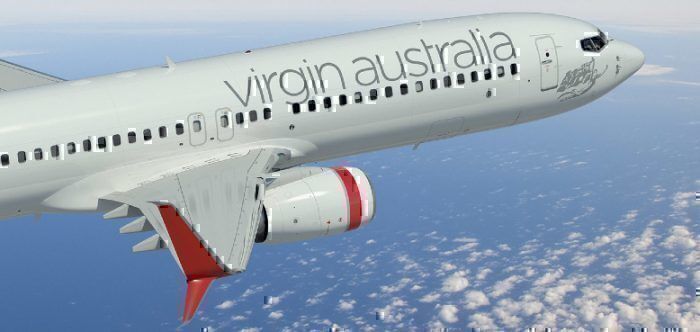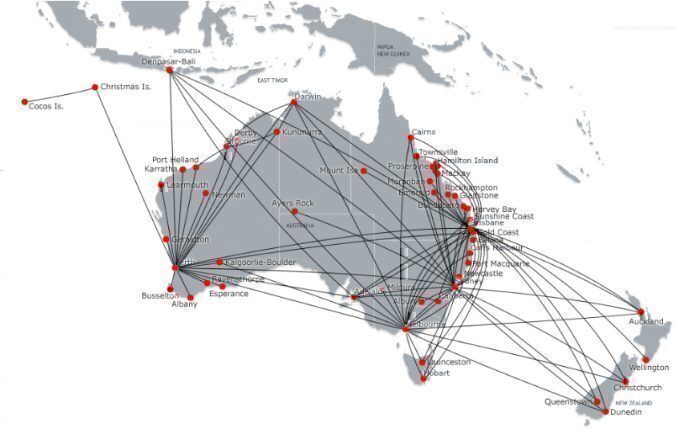Virgin Australia has become the first Australian airline to use split scimitar wingtips on its aircraft. The wingtips are being fitted to five of Virgin Australia’s Boeing 737-800 aircraft. The benefits of these include substantial reductions in the aircraft’s fuel consumption and carbon emissions. It’s a win for both the airline’s balance sheet and the environment.
While Virgin Australia is the first Australian airline to make use of the innovative technology, split scimitar wingtips have been commercially available since 2014. They are used on the 737 by several airlines, including Southwest and United. The wingtip, manufactured by Aviation Partners Boeing (APB) is also a feature of the 737 MAX.
PR Newswire reports that APB is a joint venture between Boeing and Seattle based Aviation Partners. Aviation Partners Boeing says their split scimitar wingtip is now used on over 1,200 aircraft. They estimate their product has saved around 9.8 billion gallons of fuel and cut carbon emissions by 104 million tonnes.
How do split scimitar wingtips work?
Australian Aviation notes that the wingtips were named after the curved Middle Eastern sword, known as a scimitar. The wingtip is split and looks like a sideways V. One section curves upward, while the bottom section points down and angles out.
The wingtips help reduce drag at the end of the wing and distribute lift more consistently across the entire wing. This leads to fuel efficiencies with a fuel-saving of approximately 2.2% over a 3,000 nautical mile flight. With fuel costs being the largest expense for an airline, squeezing any reductions they can in this cost makes eminent sense.
In a statement, Virgin Australia said;
“The Split Scimitar Winglet uses existing blended winglet technology but adds new aerodynamic Scimitar tips, designed in a sideways V shape, further increasing the efficiency of the aircraft and reducing the amount of fuel we burn and cutting our carbon emissions”.
The Virgin planes will be used for short-haul international routes
The first Virgin Australia 737-800 (VH-YIV) has already been fitted with the split scimitar wingtips in August, in Christchurch, New Zealand. Four more 737-800s are been retrofitted with the wingtips. These wingtips might look like minor additions to the aircraft, but Australian Aviation reports the wingtips weigh in at a hefty 150kg. They have a list price of approximately USD$500,000 plus installation costs.
The work was carried out by Air New Zealand Engineering and Maintenance.
The advantages of the split scimitar wingtips are not apparent during takeoffs and landings. The benefits are achieved when the aircraft is at cruise altitude. The wingtips work on flights of three hours or more, where the aircraft spends a decent amount of time at cruising altitude.
Virgin Australia is using its retrofitted aircraft on short-haul international flights between Australia and New Zealand, Bali, Fiji and the South Pacific. The airline has a specific set of 737-800s fitted with liferafts for overwater flying and it is these planes that are been sent to Christchurch to have the split scimitar wingtips fitted.
As Virgin Australia’s new boss, Paul Surrah, looks for cost savings, it’s good to see the airline both able to do this and reduce its carbon footprint. It will be interesting to see if the rollout continues past the five first aircraft and whether its arch local competitor, Qantas, follows Virgin’s lead.



